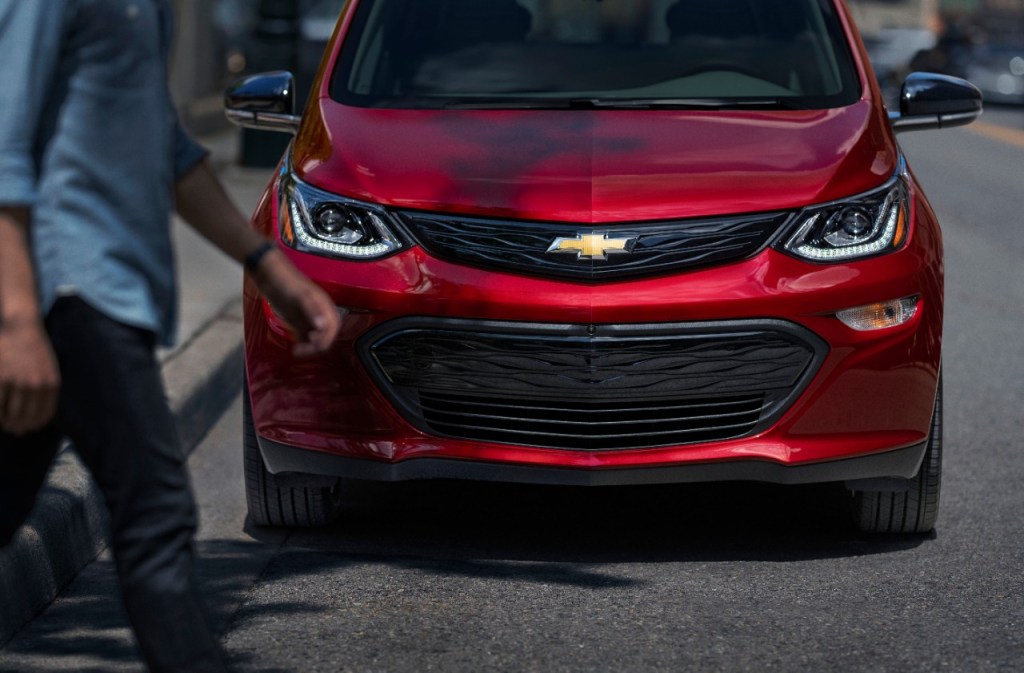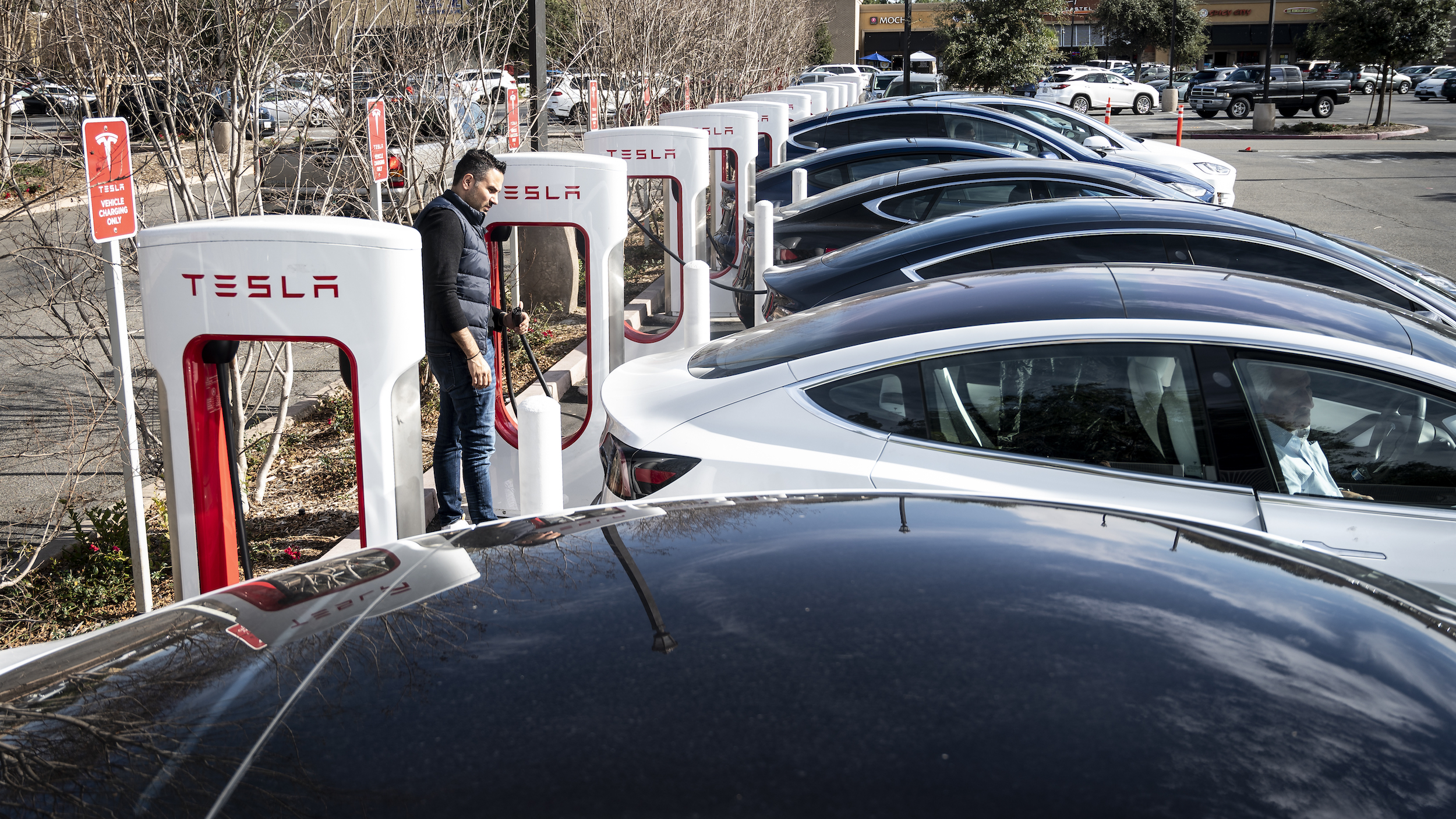
EV sales remained strong in Q4. They could have been stronger

If you’ve only been reading headlines these past few months, you’d think demand for electric vehicles has fallen off a cliff.
There are many reasons why that’s not the case, some of which we’ll get into later, but two more data points landed this week in Tesla’s and GM’s annual sales figures: Tesla delivered 38% more vehicles this year compared with last year, while GM sold 93% more.
That hardly sounds like the sputtering of a dying market.
The reality is that automakers appear to have produced overly rosy forecasts about the future growth of the EV market based on a year and a half of sales data collected during an era of constrained supply, skyrocketing inflation, and pent-up consumer demand. In other words, they saw a black swan swimming in a small pond and confused it for a flock of white ones approaching over the horizon.
GM and Toyota are shaping up to be the biggest losers in the EV transition
That flock is almost certainly still out there. In some countries, like Norway, where 82% of new vehicles are electric, it has already landed. And in places like the U.S., which is a relative laggard, consumer sentiment remains remarkably high given the cost and charging challenges that many EVs still face. Across a range of surveys, about a quarter of Americans say their next vehicle will be fully electric. That jibes with other forecasts that predict EVs will make up around 25% of the market in 2026. The demand will be there, but to make the most of it, automakers have some work to do.
So how should automakers spend their money? It depends on whether that automaker is Tesla or not.
In Tesla’s case, the company appears to be constrained by a few factors. The most obvious is its limited offerings; it basically sells four vehicles, only two of which are arguably affordable to the mass market. (I’m not considering the Cybertruck at this time for two reasons: one, it’s not widely available, and two, it’s still an open question as to whether truck buyers will warm to its styling.)
Now, the Model 3 and Model Y have been incredibly successful in their respective segments. Together, Tesla sold nearly 2 million of them worldwide. For context, BMW sold 2.1 million across all its model lines in 2022. Price cuts, enabled by Tesla’s generous profit margins, have helped some, but there are only so many buyers for luxury midsize sedans and crossovers.
If the company wants to keep the growth engine humming, it’ll need some diversity in its lineup. The $25,000 Tesla that Elon Musk has long teased could help, and speeding that to production would help drive sales in the coming years. (Public opinion of Musk could be a headwind, too, though it’s unclear how much of an impact it will have on sales.)
Legacy automakers like GM, Ford and Toyota don’t have the same problems. While it’s true that none of them have particularly broad EV offerings — GM sells seven across its stable of five brands, Ford sells three, and Toyota sells two, if you count the badge-engineered Lexus RZ 450e — they also have plenty of experience ginning up new models from existing platforms.
Instead, if the legacy automakers want to juice demand for their EVs, they’ll have to get serious about charging and reining in prices.
EV charging can be great; Tesla has shown that it’s possible. Most other automakers, though, were content to leave it to third parties, and the results have been pretty bad. Broken plugs, malfunctioning touchscreens, overheated equipment, slow charging speeds — the list goes on. The incumbents seemed to realize the extent of the problem last year when nearly all of them signed deals with Tesla to adopt the NACS plug and gain access to part of the Supercharger network.

Many of them also banded together to create their own charging network, but the jury is definitely still out on that one. Still, it shows that they get it. Enough to try to solve the problem themselves? Clearly not. But they finally understand that a poor charging experience is an impediment to EV sales that could cost them market share.
But charging is just one part of the equation. Their market share is further threatened by overly expensive vehicles. EV sales figures from Ford and GM show just how significant pricing can be to drive adoption.
Ford notched an 18% increase in EV sales this year. It was enough to put them at No. 2 in the category, though the growth wasn’t as eye-popping as GM’s. The difference appears to come down to which EVs each company sold and how much they sold for.
Ford sold 40,771 Mustang Mach-Es and 24,165 F-150 Lightnings last year. Lightning sales stand out for a few reasons. Just two years ago, Ford was crowing about racking up more than 200,000 reservations for the truck, and CEO Jim Farley said that the company would double production capacity to 150,000 vehicles annually. But after a series of price hikes that put the vehicle anywhere between $6,000 and $20,000 more than initially promised, most of those reservations didn’t convert to sales. Last month, Ford said it would be halving production in 2024.
Meanwhile, GM’s EV sales rose on the back of strong demand for the Chevy Bolt, which started at $26,500. GM sold 62,045 of them, and it probably could have sold more if it hadn’t stopped production in December to retool the factory for new EV models.
That’s not to say that GM has a clear path in front of it. Its new EV models have had a very rocky rollout, with Chevrolet issuing a stop sale order on its new Blazer EV after early units suffered from blank infotainment screens, failed charging sessions, and brake system errors. What’s more, that model starts near $60,000, more than double that of the Bolt.
Ford and GM have both pursued higher prices in an effort to get their EV lines to profitability as quickly as possible. As a result, sales are suffering today, and the companies are risking losing market share to competitors who succeed in delivering EVs at prices consumers can stomach. At more reasonable prices, demand remains strong. The question is whether legacy automakers want to meet it or cede it to others.